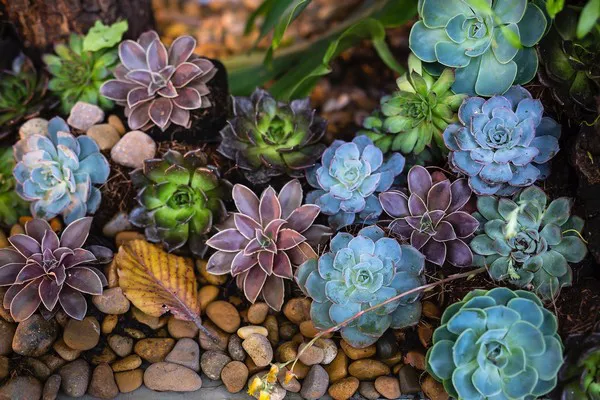Succulents, with their remarkable ability to store water in their leaves and stems, have become a favorite among plant enthusiasts of all levels. When it comes to cultivating these unique plants, selecting the right growing medium is paramount to their success. In this comprehensive guide, we will explore the essential components that succulents need in their planting mix, the importance of proper drainage, and tips for creating an optimal environment for their growth.
Understanding Succulent Planting Mix: The Essentials
Succulents thrive in well-draining, gritty soils that mimic their natural habitats. A well-balanced planting mix provides the necessary nutrients and aeration while preventing excess moisture retention, which can lead to root rot. Here are the key components that make up an ideal succulent planting mix:
1. Succulent Soil
The foundation of a succulent planting mix is a well-draining soil designed for arid-loving plants. Commercial succulent and cactus potting mixes are readily available and are usually formulated to provide excellent drainage while retaining enough moisture for the plants to access.
2. Inorganic Amendments
Adding inorganic materials such as perlite, coarse sand, or pumice helps improve aeration and drainage in the soil mix. These materials create air pockets that prevent water from pooling around the roots, reducing the risk of rot.
3. Organic Matter
A small amount of organic matter, such as coconut coir or compost, can be incorporated to improve water retention without sacrificing drainage. However, it’s important not to overdo it, as succulents prefer leaner soils.
4. Mineral Additives
Some gardeners choose to incorporate mineral additives like crushed granite or calcined clay to enhance drainage and create a more stable structure in the soil.
The Role of Proper Drainage
Succulents are exceptionally sensitive to waterlogged soil. In their natural habitats, they often experience periods of intense rain followed by drought, which has led them to evolve efficient water storage mechanisms. Proper drainage is crucial to mimic these conditions and prevent root rot. Here’s why it matters:
1. Preventing Root Rot
Excess water around the roots can suffocate them and promote the growth of harmful pathogens. Well-draining soil ensures that water flows away from the roots, reducing the risk of root rot.
2. Encouraging Healthy Root Growth
Good drainage promotes healthy root development. When roots have access to both water and air, they can better absorb nutrients and support the overall health of the plant.
3. Minimizing Stress
Plants sitting in waterlogged soil become stressed, which weakens their immune systems and leaves them vulnerable to diseases and pests. Adequate drainage helps keep succulents stress-free and resilient.
Creating an Optimal Planting Environment
Apart from the planting mix and drainage considerations, several additional factors contribute to creating the perfect environment for succulents to thrive:
1. Container Selection
Choose pots with drainage holes to ensure excess water can escape. This prevents water from accumulating at the bottom of the pot and drenching the roots.
2. Potting Depth
When planting succulents, position them in the pot at a depth that allows the soil line to be slightly below the rim. This helps prevent water from spilling over when you water the plants.
3. Appropriate Watering
Watering succulents requires a delicate balance. Allow the soil to dry out between waterings, and when you do water, water thoroughly until water starts draining from the bottom of the pot. Adjust the frequency based on the plant’s needs and environmental conditions.
4. Temperature and Light
Succulents prefer bright, indirect sunlight. Providing the right amount of light and maintaining suitable temperatures can impact their growth and overall health.
5. Seasonal Adjustments
Remember that succulents have varying growth patterns based on the seasons. Adjust your care routine to accommodate their changing needs, such as reduced watering during the dormant winter months.
Conclusion
The success of your succulent garden begins with the right planting mix and a focus on proper drainage. By understanding the components that make up a well-balanced planting mix and the role of drainage in preventing root rot, you can provide your succulents with an environment that closely resembles their natural habitats. Creating an optimal planting environment involves thoughtful container selection, appropriate watering practices, and attention to factors like light and temperature. Whether you’re a novice gardener or an experienced enthusiast, giving your succulents the best start will lead to a vibrant, thriving collection that adds beauty and uniqueness to your living spaces.


